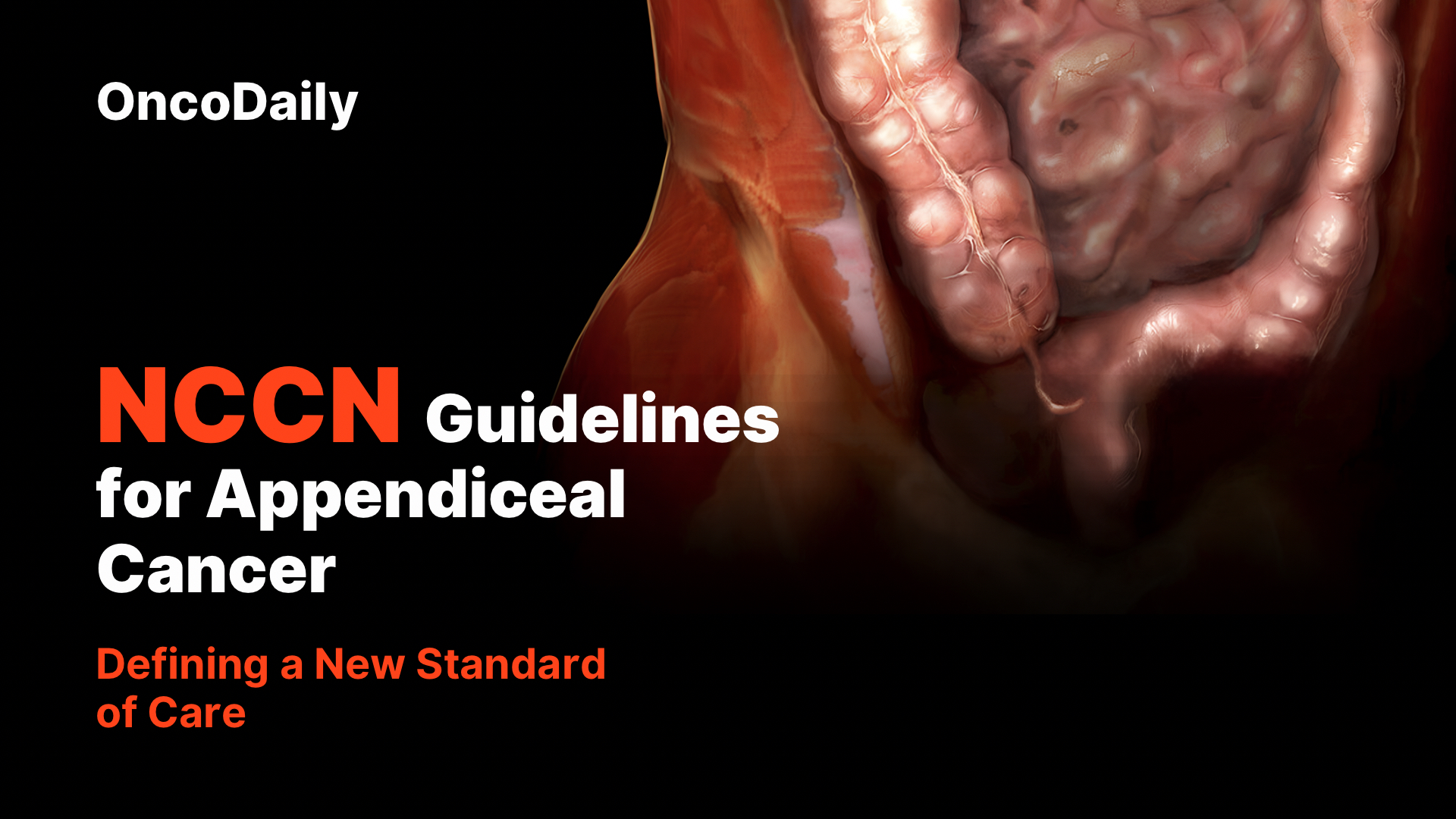For decades, appendiceal cancer was the orphan cousin of colorectal cancer tucked away under a brief note in major guidelines, its complexities reduced to “follow colorectal protocols”. Now, for the first time, the National Comprehensive Cancer Network (NCCN) has given this rare malignancy its own voice.
The newly released NCCN Guidelines for Appendiceal Cancer mark a milestone, providing a clear and independent roadmap for clinicians who have long been navigating uncharted territory.
NCCN Guidelines for Appendiceal Cancer: From Footnote to Front Page
Until now, oncologists relied on extrapolations from colorectal cancer algorithms, despite clear biological and clinical differences. Appendiceal tumors are anything, but uniform spanning mucinous, non-mucinous, goblet-cell, and high-grade variants and their spread patterns defy classic colorectal logic.
The new guidelines formally acknowledge this distinct identity. They redefine appendiceal primaries not as an afterthought but as a complex, standalone entity deserving of precision in diagnosis, staging, and management.

Clarity Where There Was Confusion
For years, ambiguity clouded every stage of care, from histopathologic classification to surgical decision-making. The NCCN now provides a coherent structure for the entire pathway, from initial diagnosis to treatment of peritoneal spread.
Whether determining when to perform a right hemicolectomy, when cytoreductive surgery with HIPEC is justified, or how to classify mucinous lesions, clinicians finally have a unified reference point grounded in expert consensus and best available evidence.
A Win for Multidisciplinary Thinking
The guidelines spotlight what experts have long emphasized: appendiceal cancer is a team sport.
Management requires collaboration among surgical oncologists, medical oncologists, radiologists, and pathologists with dedicated expertise in appendiceal disease. The NCCN explicitly calls for multidisciplinary tumor boards and for patients to be referred to high-volume centers where specialized care and research infrastructure exist.
Pushing the Field Toward Evidence
While the new framework is a leap forward, it also exposes the stark reality, the data gap remains enormous.
The NCCN urges enrollment in clinical trials and real-world registries to build a stronger evidence base. For a cancer type that has historically fallen through the cracks of research funding and trial inclusion, this recognition is a call to action for investigators and sponsors alike.
A Quiet Revolution: With a Few Missing Voices
Some experts were quick to note that leaders such as J. Philip Shen, MD and Michael Foote, among the most prominent researchers in this niche, were not listed among the contributors. Their absence doesn’t diminish the achievement, but underscores the need for continued collaboration and inclusivity as the field evolves.
Nevertheless, the document’s impact is undeniable. It codifies decades of scattered knowledge into one accessible, authoritative guide, a lifeline for clinicians managing an unpredictable disease.
Beyond the Guidelines: A Turning Point in Mindset
Perhaps the greatest shift is philosophical. The recognition that appendiceal cancer is not simply colorectal cancer by another name reframes how medicine views and values rare tumors. It legitimizes a field that has long been marginalized and opens the door for funding, trials, and awareness that patients have always deserved.
Learn more about the NCCN Guidelines at OncoDaily
Written by Nare Hovhannisyan, MD
